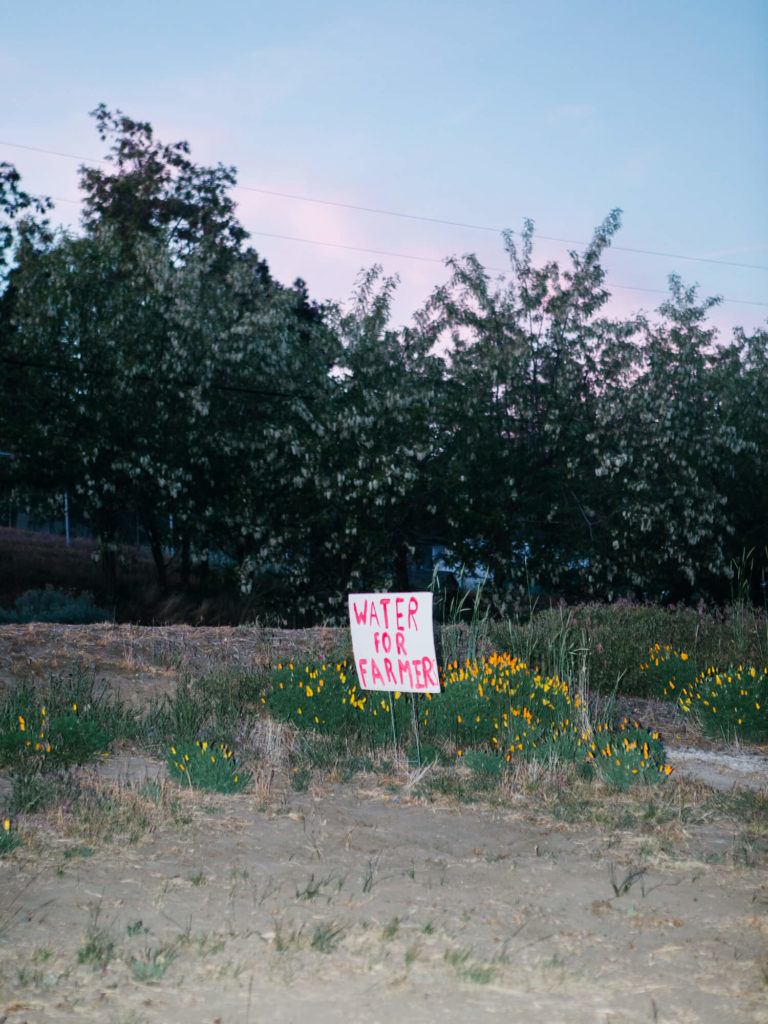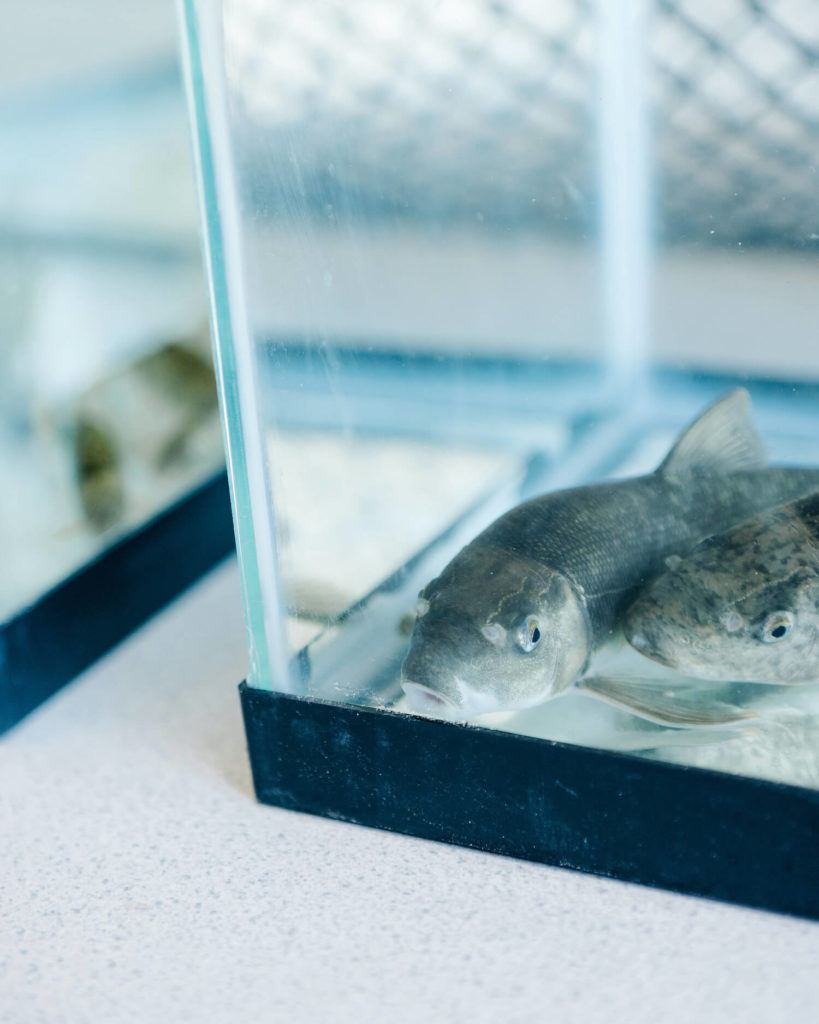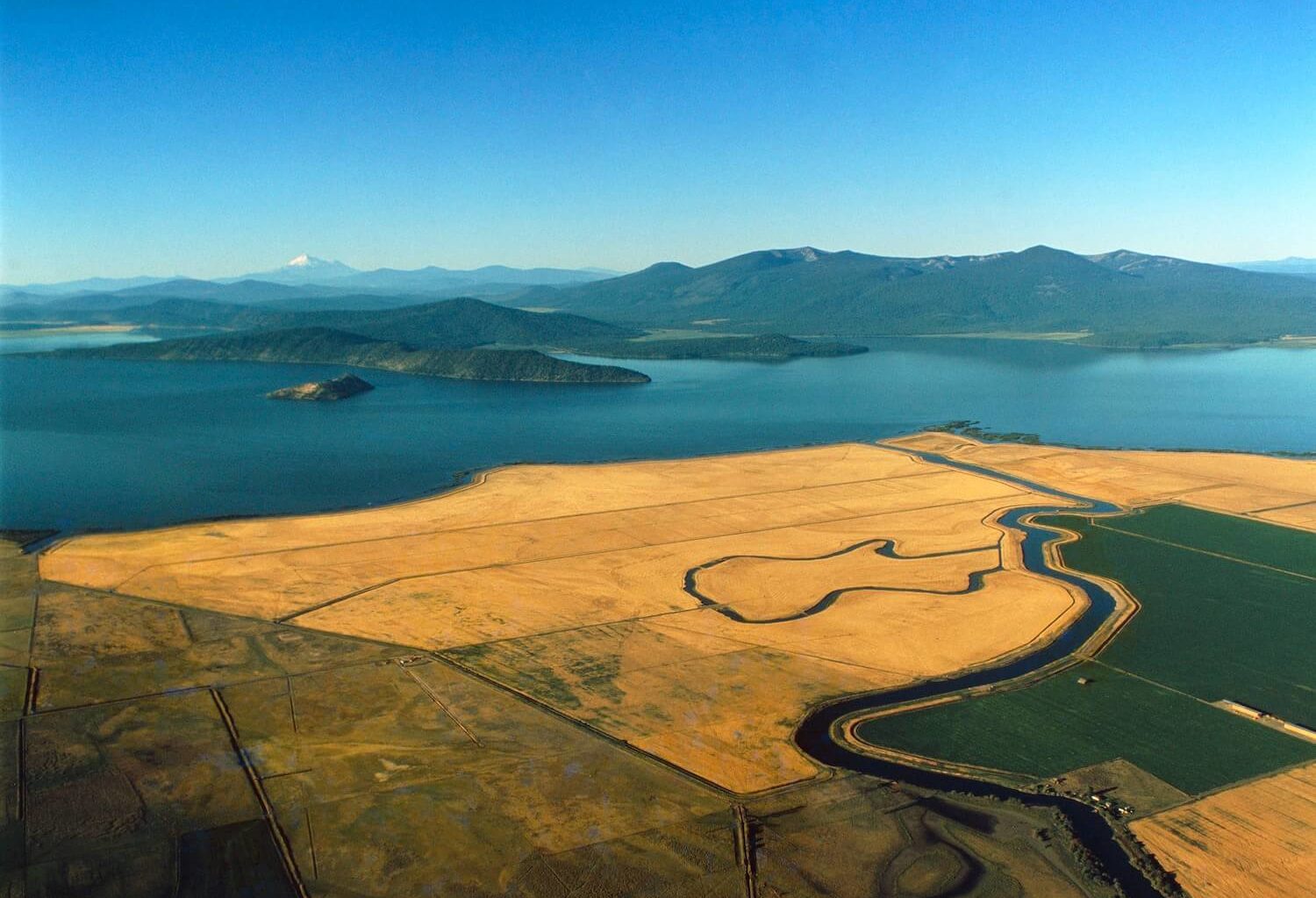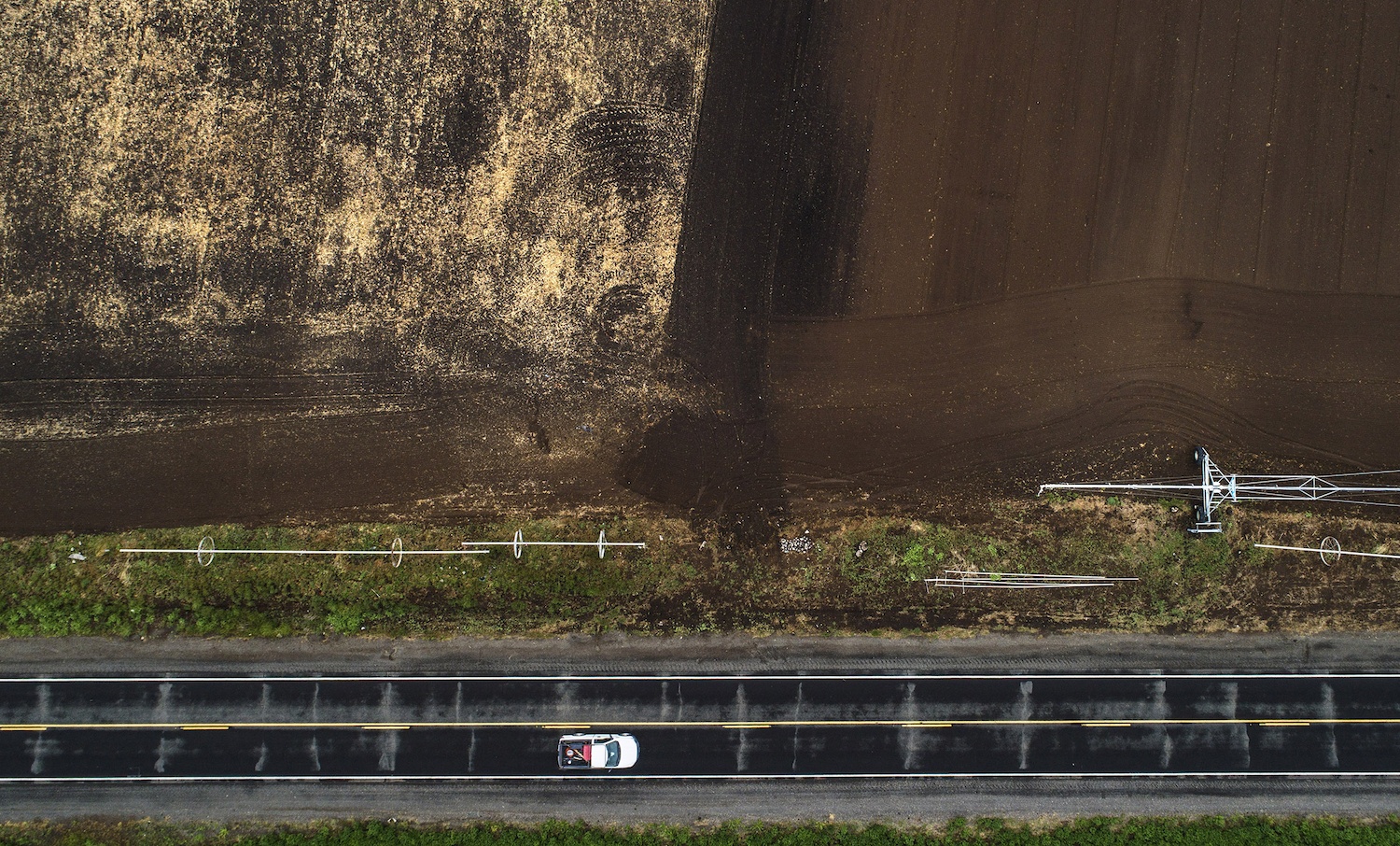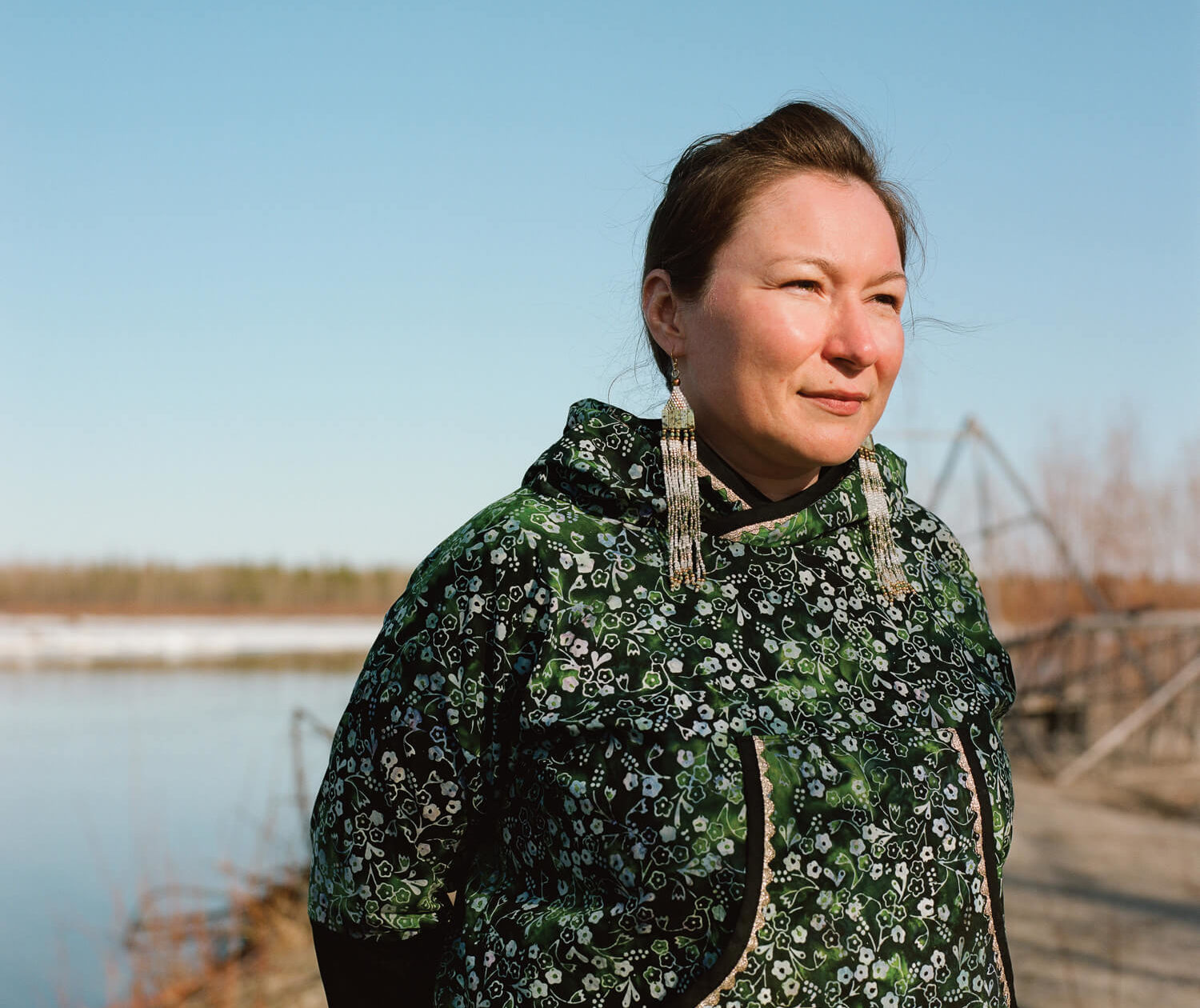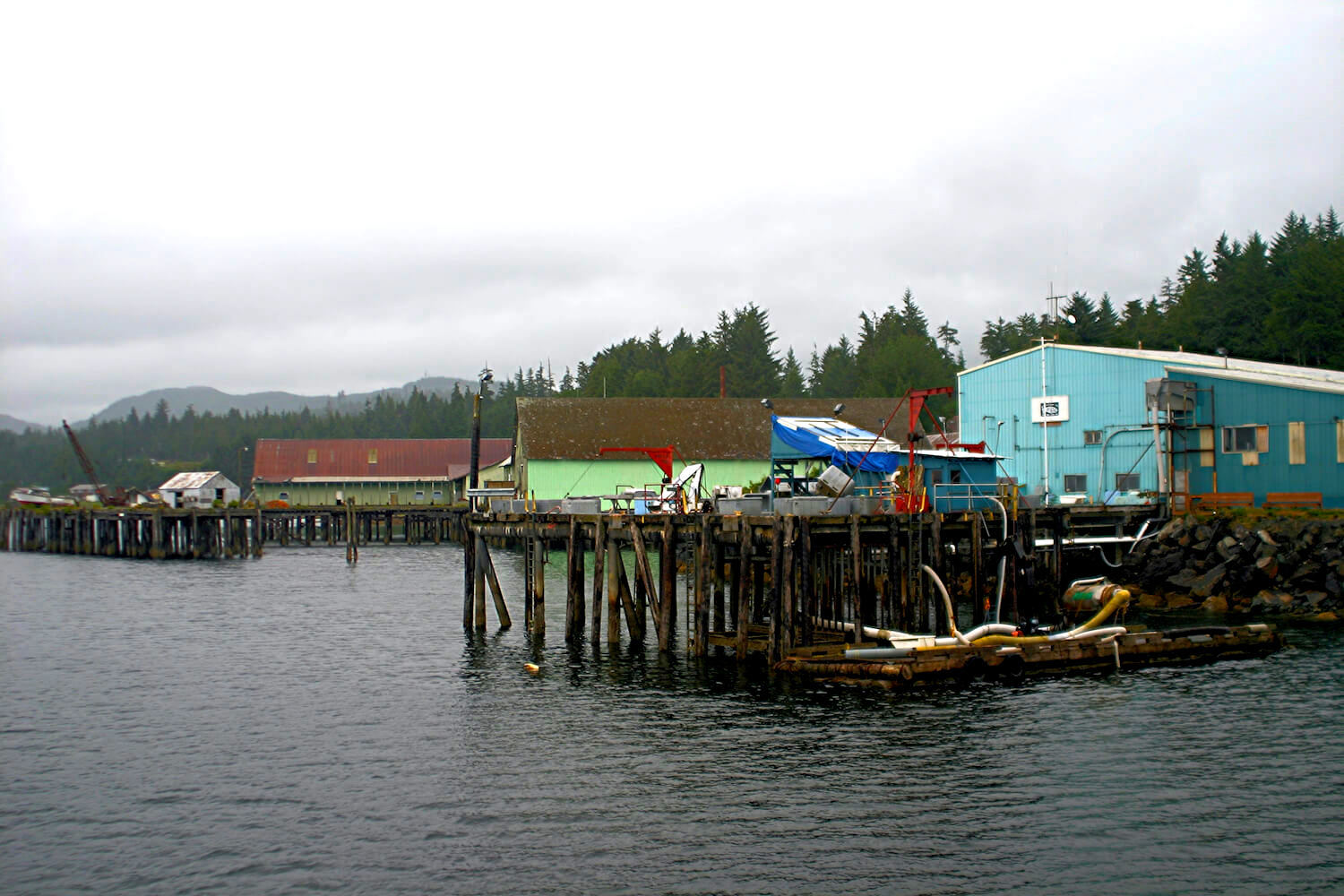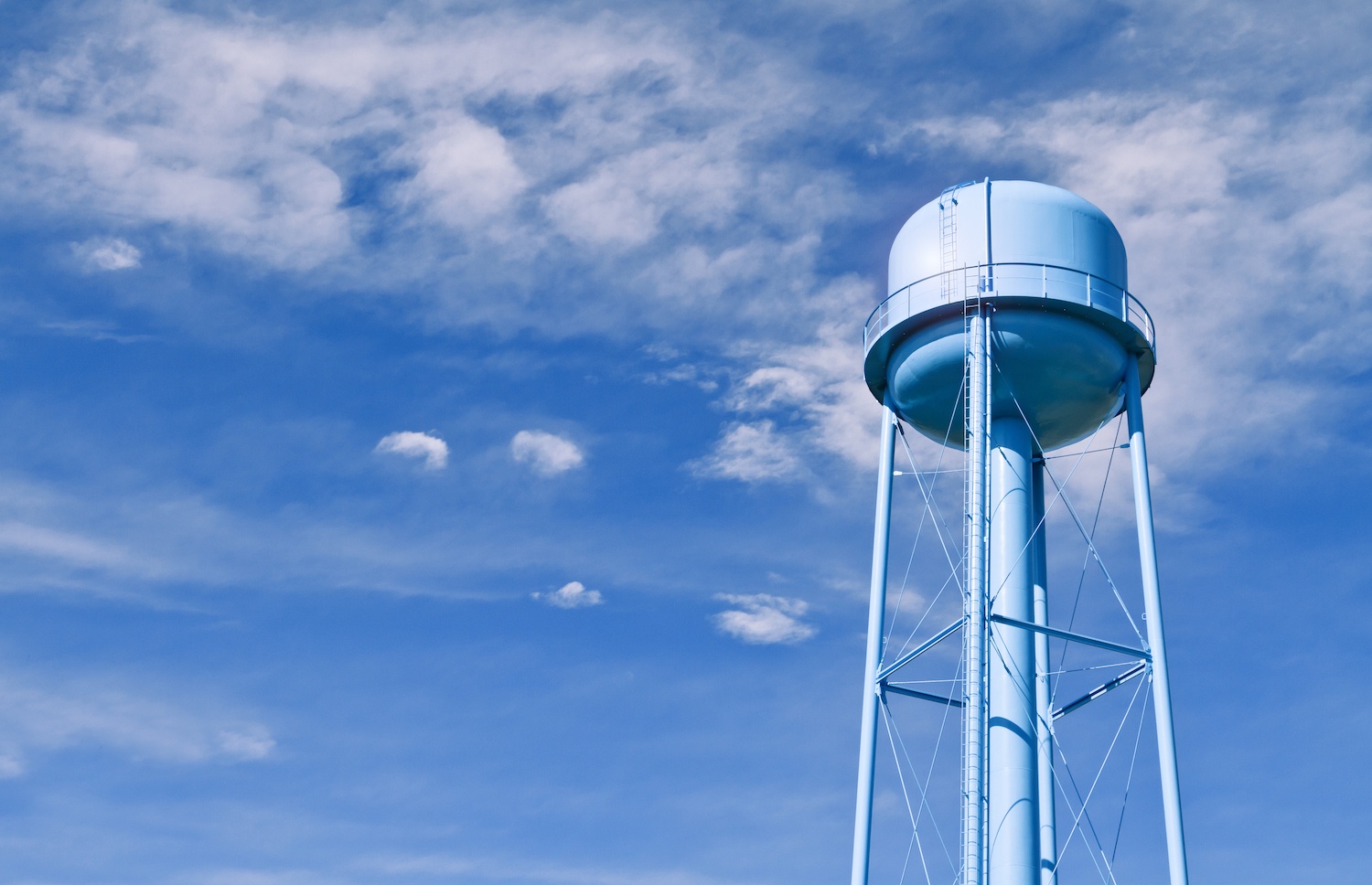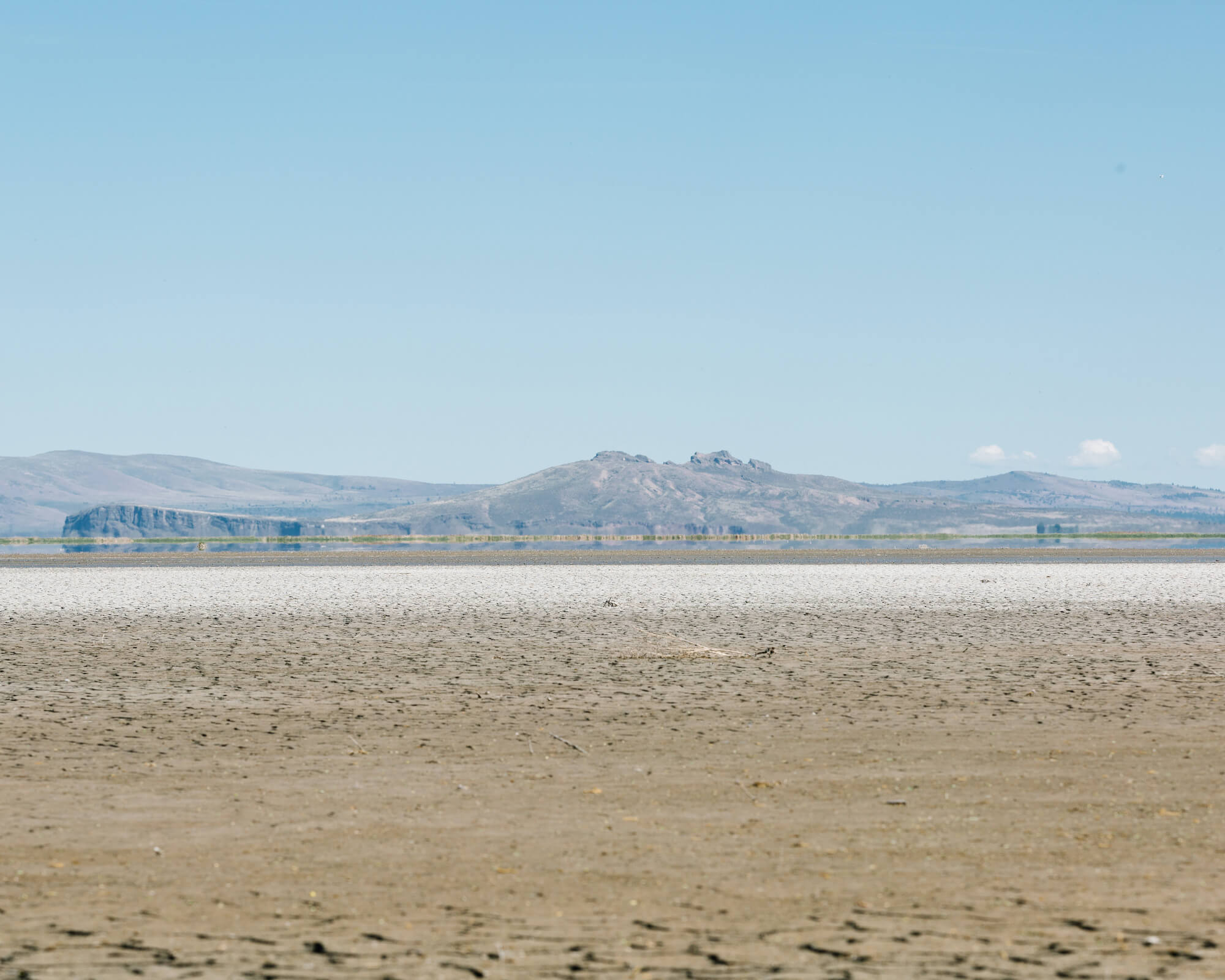
Will Matsuda
This year’s drought is worse than in 2001, when political and environmental tensions exploded into the national spotlight.
Pictured above: Tule Lake National Refuge on May 28, 2021, in California, near the Oregon border, has been severely impacted by the drought and the lack of irrigation waters from Upper Klamath Lake, which usally feed into the refuge.
In mid-May, Klamath Tribal members and supporters stood at Sugarman’s Corner in downtown Klamath Falls, Oregon, holding signs like “Ecocide is Cultural Genocide,” “Save the Klamath” and “Honor the Treaty” as part of a caravan rally. The goal was to highlight Indigenous voices and priorities for the Klamath River basin, like protecting culturally important c’wam (Lost River suckers) and koptu (shortnose suckers) endemic to shallow Upper Klamath Lake.
This story was originally published at High Country News (hcn.org) on June 14, 2021. Photography by Will Matsuda.
Tensions were high in the basin, which spans the Oregon-California border. Just a day before the rally, the U.S. Bureau of Reclamation had announced that it wouldn’t release water in the basin to irrigators or national wildlife refuges because of dire drought forecasts.
Joey Gentry, a member of the Klamath Tribes who helped organize the event, nervously braced herself for an armed counterprotest, like the ones that happened in Klamath Falls during Black Lives Matter marches last year. To Gentry’s relief, however, no counterprotesters materialized. “Everyone empathizes with the plight of our farmers,” said Gentry, who farms hemp in the region. “But we also now know that food systems and agriculture systems must support ecosystems for all of us.”
This summer’s strife recalls the events of summer 2001, when drought caused the Bureau of Reclamation to cut off water to the majority of fields in the area and farmers staged a standoff to restore the flow. Now, the basin is facing an even worse drought: A large-scale fish kill has already happened, and, for the first time since 2001, the majority of farming in the basin must cease for lack of water.
Another factor reminiscent of 2001 is a new iteration of an old theme: An extremist element is present in the region, more energized and better organized than in the past. But there are critical political and legal differences between this year and 2001: Years of negotiations on large-scale settlements have built relationships between tribal nations, politicians, agencies and irrigators that didn’t exist before. And a slew of court cases over the past two decades have affirmed that the federal government must prioritize tribal nations’ water rights and protected species’ needs. “The state and the federal government, I believe, have a real responsibility to help folks,” said Klamath Tribes Chairman Don Gentry. (Don and Joey Gentry are siblings.) “It’s an environmental injustice … This is our homeland; all the things that were placed here should be here. We shouldn’t have to fight over them.”
THE KLAMATH BASIN contains Upper Klamath Lake, which supplies part of the water for the Klamath Project, a Bureau of Reclamation irrigation operation that waters 1,200 farms and over 240,000 acres of farmland. Water from the lake flows southwesterly via the Klamath River through the ancestral lands of the Klamath Tribes, Hoopa Tribe, Karuk Tribe and Yurok Tribe, emptying into the Pacific.
But more of that water is spoken for than actually exists. The U.S. Department of Agriculture estimates water flows would need to be 135% of average to fulfill all of the rights in the basin. Forecasts put this summer’s streamflow as low as 21% of average. “There’s really not enough water in a good water year,” said Adell Amos, Clayton R. Hess Professor of Law at University of Oregon, who worked as a staff lawyer for the U.S. Department of Interior during 2001. “But when we get a year like this year, it becomes really profound.”
In April 2001, the Bureau of Reclamation cut off all irrigation to 170,000 acres of farmland, the first time in U.S. history that farmers were forced to stop farming because the agency would not deliver water. Instead, it prioritized water for threatened and endangered species: coho salmon in the Klamath River, and c’wam and koptu upstream.
The U.S. Department of Agriculture estimates water flows would need to be 135% of average to fulfill all of the rights in the basin.
In response, farmer-activists illegally broke open the Klamath Project’s head gates and held protests, and convoys of outside supporters, including some with militia ties, rolled into town. The actions seemed to work: In midsummer, the George W. Bush administration released some water to farmers. But that did little to appease the protestors, and after the water ran out in September, 300 people climbed over a chain-link fence at the head gates and set up an encampment. The standoff ended in an uneasy truce after the terrorist attacks on Sept. 11.
The next summer, despite the same drought conditions, the Bush administration provided farmers their full water allocation. That left little water for the Klamath River itself and meant the federal government failed to meet its tribal trust obligations. In the fall, a devastating disease that proliferates in warm, shallow water ripped through coho, chinook and steelhead populations in the river, killing an estimated 34,000 adult salmon, the largest fish kill in U.S. history. A federal whistleblower later alleged that, due to political pressure, the Bureau of Reclamation had illegally ignored scientific findings and prevented biologists from fully assessing the risk of lower water levels.
PERHAPS THE BIGGEST CHANGE in the basin over the past two decades is the heightened power of tribal sovereignty and water rights. In 2013, Oregon recognized the Klamath Tribes as the most senior water-rights holders in the Upper Klamath Basin. That means they can secure their water needs first in a dry year, leaving those with more junior rights with less water, or even none at all. The tribes exercised that right for the first time in 2013, to protect c’wam and koptu in Upper Klamath Lake, which meant that irrigators got less water. “It’s a blunt tool, but this was the only path available to us,” Tribal Council Member Jeff Mitchell told High Country News at the time. In March this year, they did the same — though at a much larger scale, which effectively curtailed water for both irrigators and threatened salmon downstream.
Another tool the tribes have used to protect fish and their ecosystems is litigation. Since 2016, for example, the Yurok Tribe, downriver from the Klamath Tribes, has ratcheted up its legal strategy against the Bureau of Reclamation and the Klamath Water Users Association, a group that advocates for Klamath Project farmers. Typically, the litigation is over who gets water, and when, to try to prevent another massive salmon die-off. A proposal to remove four dams on the Klamath River would alleviate pressure on the fish, and thus potentially free up water for protecting upstream species.
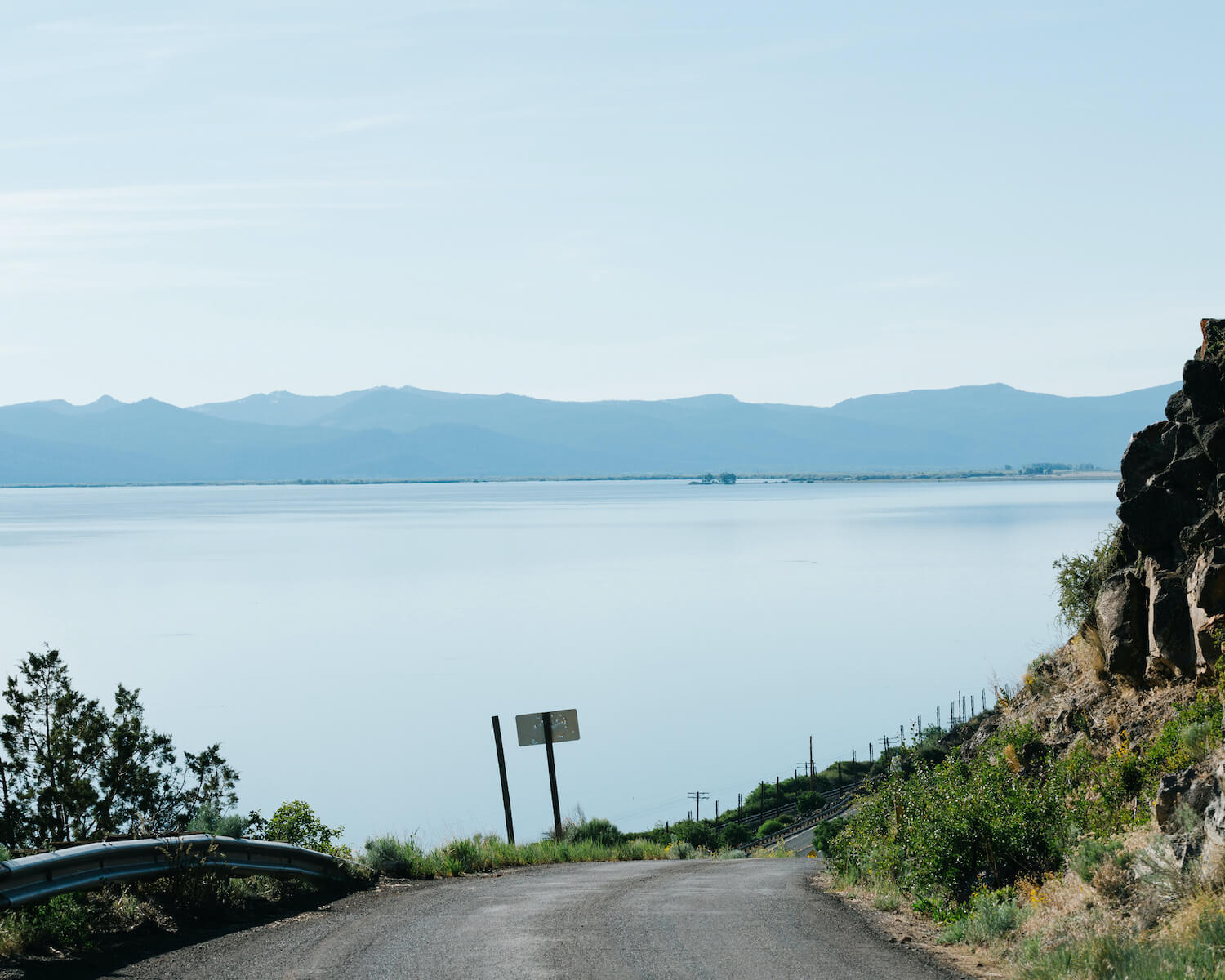
Upper Klamath Lake, Oregon, in May of this year.
Will Matsuda
Still, other challenges remain: For example, the Yurok and Hoopa tribes and Congress have yet to reach settlements quantifying the exact amount of their water rights, a source of major uncertainty during yearly water allocations.
Federal leadership is also necessary for any sort of basin-wide agreement over water use, which could help bring stability to the region. After the conflict of the early 2000s, the Interior Department led negotiations that resulted in a handful of deals, but the largest one fell apart in 2016, when Congress failed to appropriate funds for it. Essentially no progress was made during the Trump administration. In April, Interior Secretary Deb Haaland (Laguna Pueblo) mentioned a long-term plan in a memo to assistant secretaries, and acknowledged that, “given the dire and unprecedented drought conditions that we are facing, we know that difficult decisions will need to be made in the coming days and weeks to address water shortages.”
MEANWHILE, THE POTENTIAL for another standoff over Klamath Basin water appears higher than at any time since 2001, and not only because of drought. The Department of Homeland Security warned earlier this year that right-wing extremists “may be emboldened by the January 6, 2021 breach of the U.S. Capitol Building in Washington, D.C., to target elected officials and government facilities.”
Right-wing extremist groups have voiced support for Klamath farmers, often on the grounds of ‘private property rights,’ even though Klamath Project water is not necessarily legally considered irrigators’ private property. In the spring, two farmers bought land on either side of the project’s head gates, and said that they will have a standoff this year. The same farmers were photographed breaking open head gates at the 2001 encampment, though nobody was charged with a crime.
The dire position of all stakeholders could trigger a desire for fresh basin-wide conversations about a new large-scale agreement to halt the cycle of drought-related conflict within the Klamath Basin.
But this year’s encampment has little political support, unlike the 2001 standoff. The Republican congressman who represents the area, Cliff Bentz, who was elected last year, explicitly declined to visit the encampment. “There’s been some people who have said, ‘Well, if it’s our water, we should take matters into our own hands and take it.’ And I would counsel against that,” Bentz said during a public event in early June, reported Jefferson Public Radio. Partly that’s because it could make it harder for Bentz to secure financial aid for basin farmers and others from Congress; his current proposed package is $57 million.
Those at this year’s encampment are also not representative of the irrigators who would take part in basin-wide negotiations. In May, Ben DuVal, the president of the Klamath Water Users Association, spoke out against putting Bureau of Reclamation employees’ personal information online to intimidate them or bringing in outsiders who could enflame the situation. “Stop it,” DuVal said. “It is completely out of line.”
This summer, as in 2001 and 2002, the dire position of all stakeholders could trigger a desire for fresh basin-wide conversations about a new large-scale agreement to halt the cycle of drought-related conflict within the Klamath Basin. True solutions, however, aren’t limited to policy or water quantities; they must include achieving justice and acknowledging tribal presence and sovereignty, said Joey Gentry, who helped organize this year’s rally for the Klamath ecosystem. “In addition to addressing some of the solutions in the fields and in the irrigation ditches, we also have to address this equity piece.”
